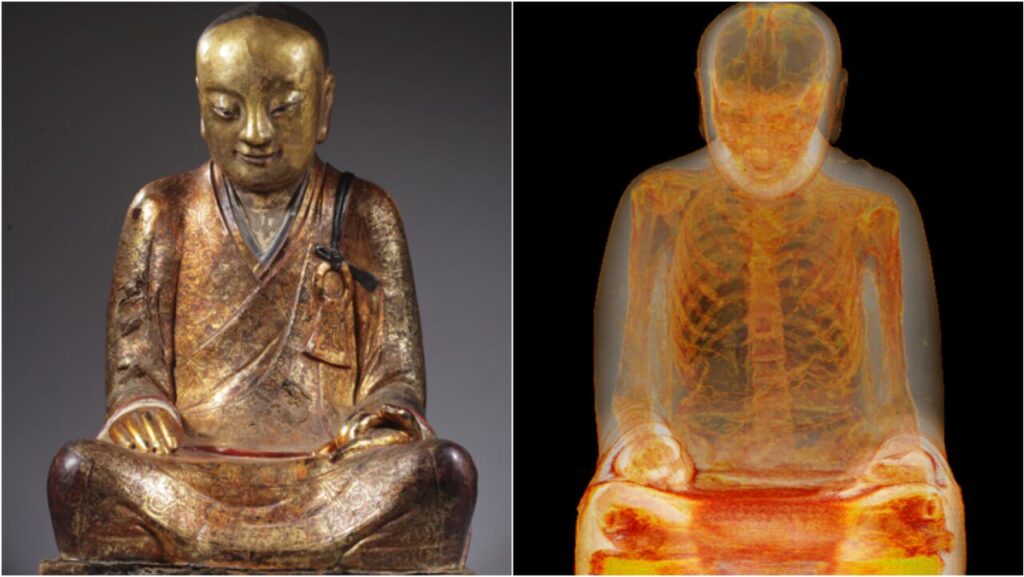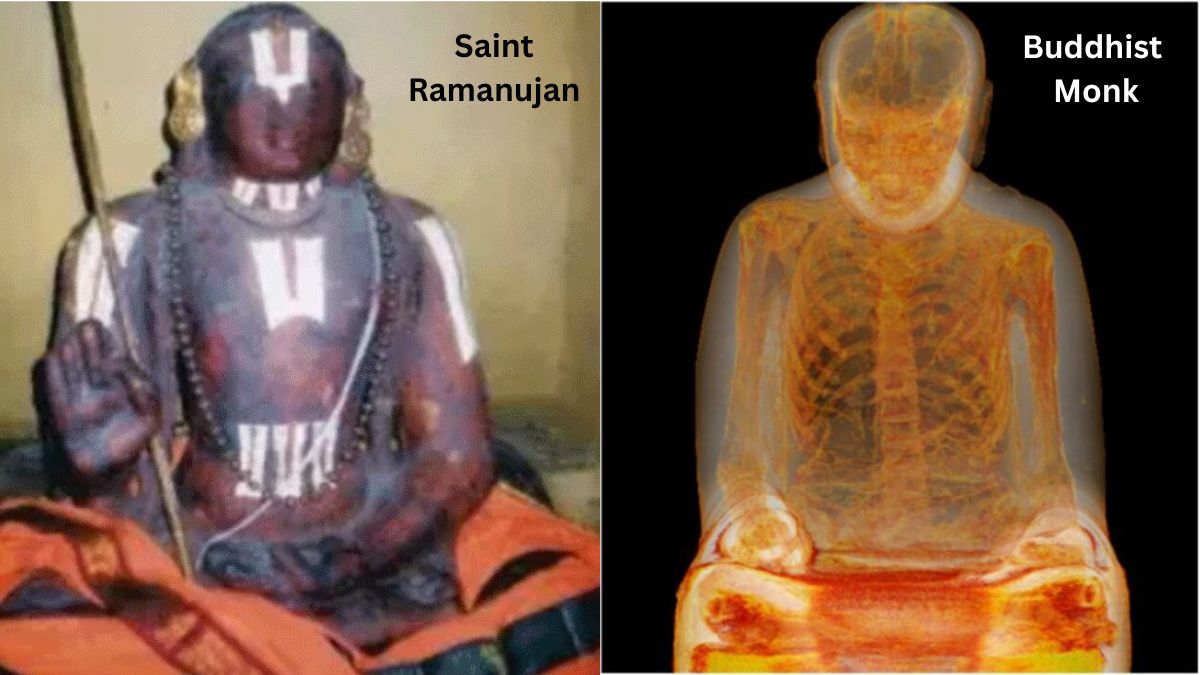Is the body of Saint Ramanujan at Srirangam a miracle of preservation, a case of mummification, or something else entirely? This question has fascinated devotees and scholars for centuries, especially when compared with similar traditions in Buddhism.

At Srirangam’s Sri Ranganathaswamy Temple, the body of Ramanuja, preserved in a sitting posture since 1137 CE, is maintained with applications of camphor and saffron twice a year, giving it an ochre tint and keeping the features-like nails and facial structure-visible to this day1210. Unlike Egyptian mummies, which are wrapped and treated with chemicals, Ramanuja’s body is openly displayed and seated, with no elaborate embalming process. The temple tradition and local accounts claim this is his actual body, though some debate remains about whether it is truly mummified or if other methods or miracles are at play
This phenomenon is not unique to Hinduism. In Buddhist traditions, particularly in Japan and China, there are well-documented cases of preserved bodies of monks, often through a process called sokushinbutsu in Japan. Here, monks would undergo years of ascetic practices and dietary restrictions, eventually leading to self-mummification before death. The process was excruciating and involved eliminating body fat and moisture, and consuming preservatives like urushi tea, all to prevent decay. If the body remained intact after death, the monk was revered as a “living Buddha” and enshrined for worship
In China, similar practices existed, with notable examples like the preserved body of Huineng, the sixth patriarch of Chan Buddhism, and mummified monks found inside Buddha statues. These bodies were often treated with lacquer and other natural preservatives, and sometimes enshrined in temples


